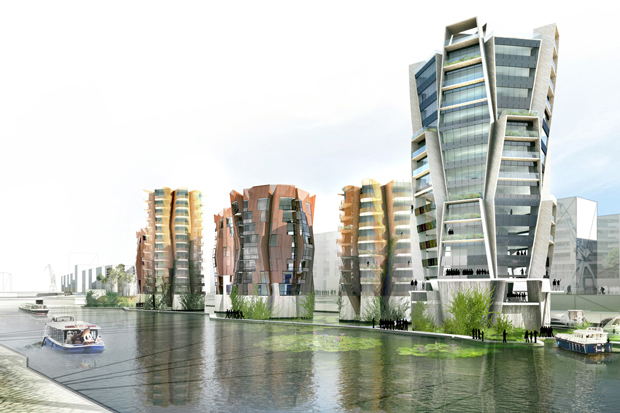
Shigeru Ban adds to Hamburg's new cityscape
Water Towers see him join Herzog & de Meuron in Europe's biggest architectural transformation
If HafenCity in Hamburg still feels like a work in progress, that’s because it is. At 157 hectares, it’s Europe’s biggest inner city development project - dwarfing the current transformation of King's Cross in London - turning a derelict waterfront into a dynamic new urban conurbation.
The idea of a new inner-city district was conceived soon after the fall of the Wall and the Iron Curtain. As Hamburg’s role in Europe increased dramatically - from being a city on the easternmost edge of the Western World, it has become the metropolitan heart of a continent growing together again - its enormous potential has opened up an opportunity for it to become a crucial hub in Central Europe.
It's already home to Herzog & de Meuron’s Elbphilharmonie concert hall, designer hotel Twenty Five Hours by architects Stephen Williams Associates, a mixed-use block by the Dutch architect Erick van Egeraat and an apartment block by LOVE Architecture in Austria. So this latest scheme, by Shigeru Ban’s Paris office, is in good company.
{media1}
The Japanese architect is responsible for half a dozen residential towers, which will sit on Baakenhafen Harbour. Called Watertowers Hafencity, the idea is that it’s literally on the water (meaning the River Elbe). The development is being dubbed a leisure island, with a recreational area, playhouse, community centre and large green spaces.
Ban is giving the three pairs of towers sustainable credentials, by building them out of a composition of concrete, wood and steel. HafenCity itself has a deadline of 2025, by which time, say its organisers, it will be “a city brimming with life”, and will have expanded Hamburg by 40%. If you can't wait until then you can console yourself with our wonderful Shigeru Ban monograph.
It features a foreward Frei Otto, the German architect and engineer responsible for the beautiful Munich Olympiastadion of 1972 with its sweeping canopies of acrylic glass - designed to imitate the Alps. Frei collaborated with Shigeru Ban on the Japan Pavilion for Expo 2000 in Hanover, Germany.
{media2}